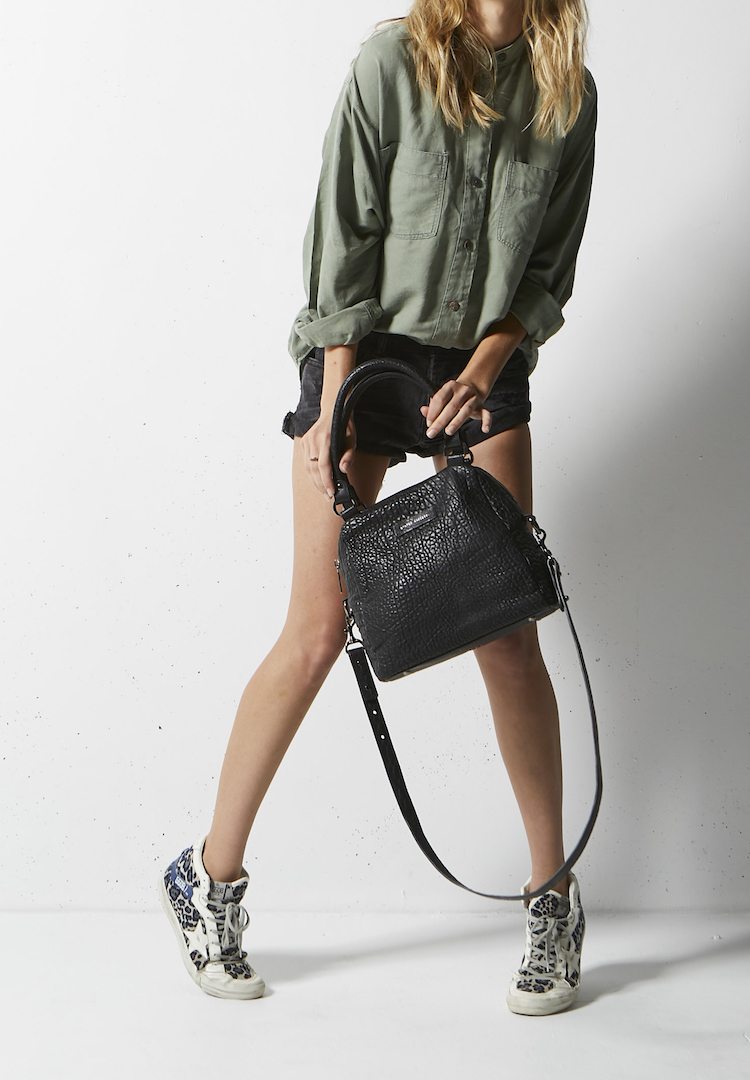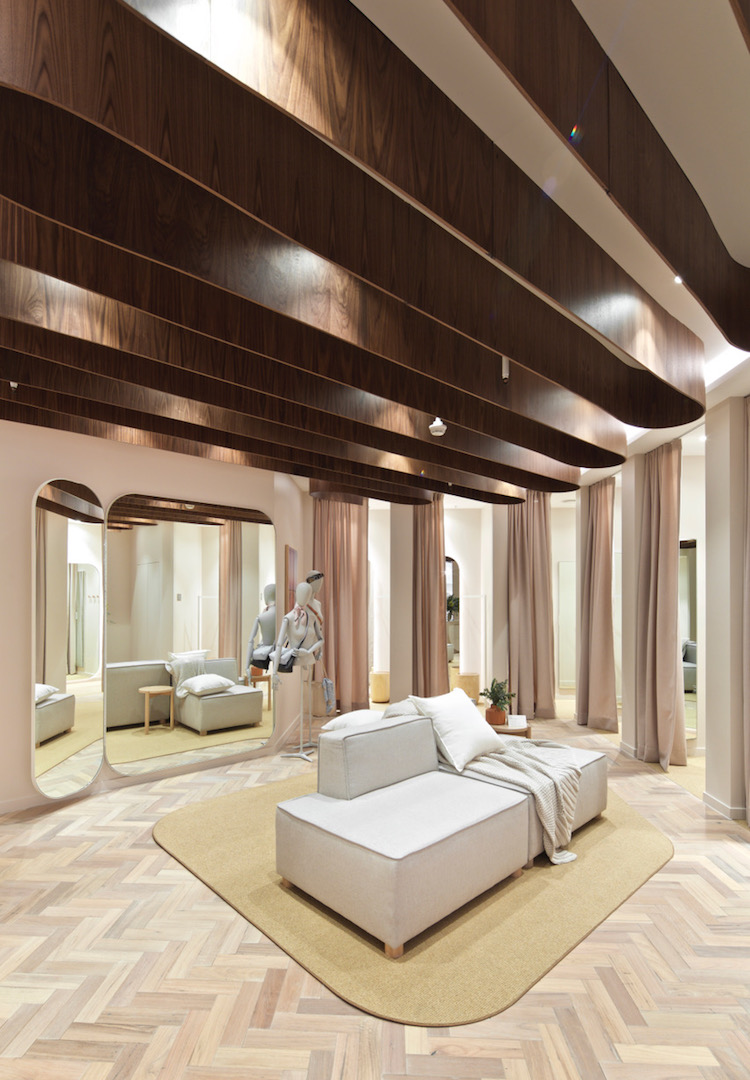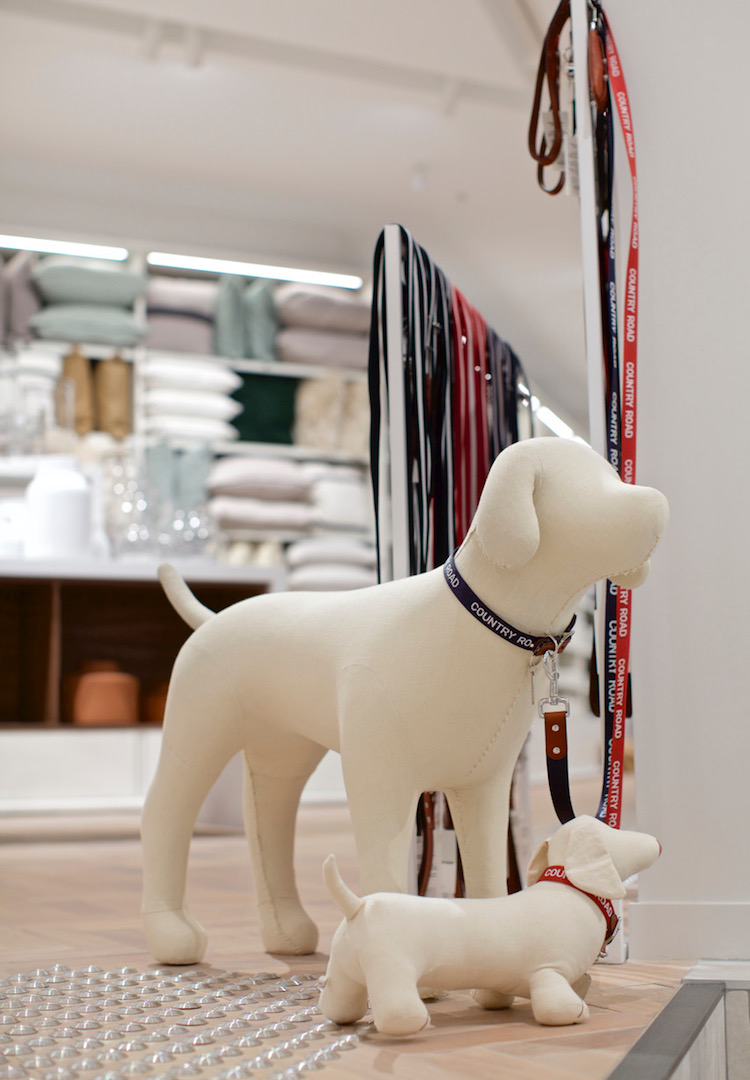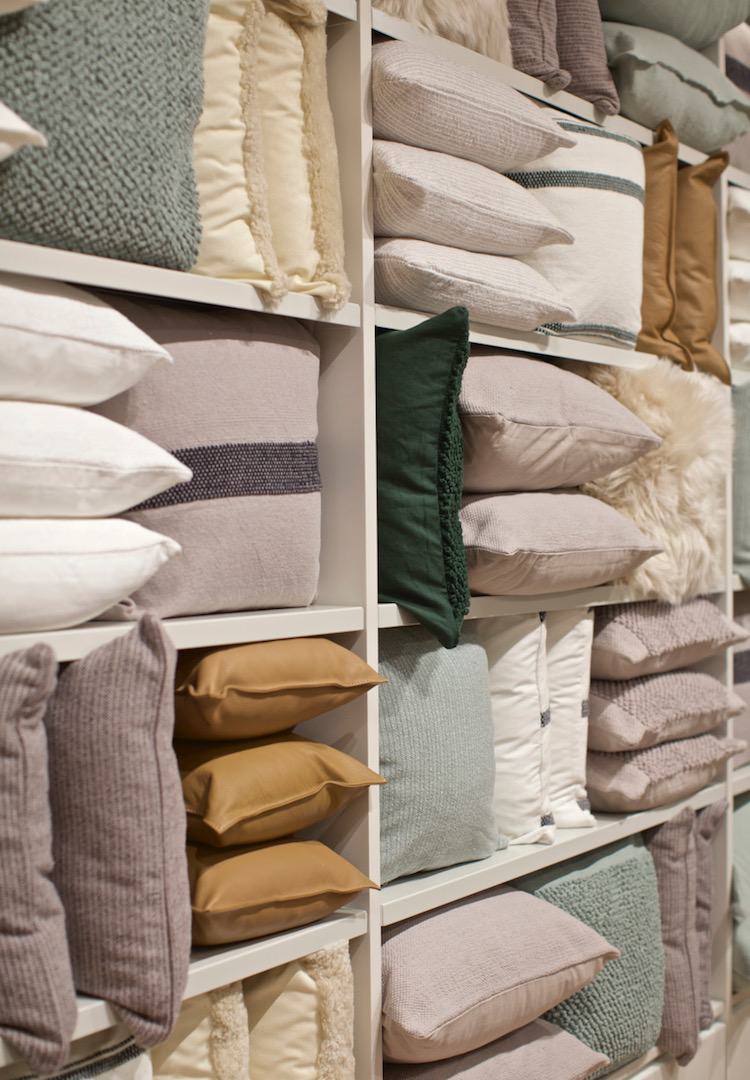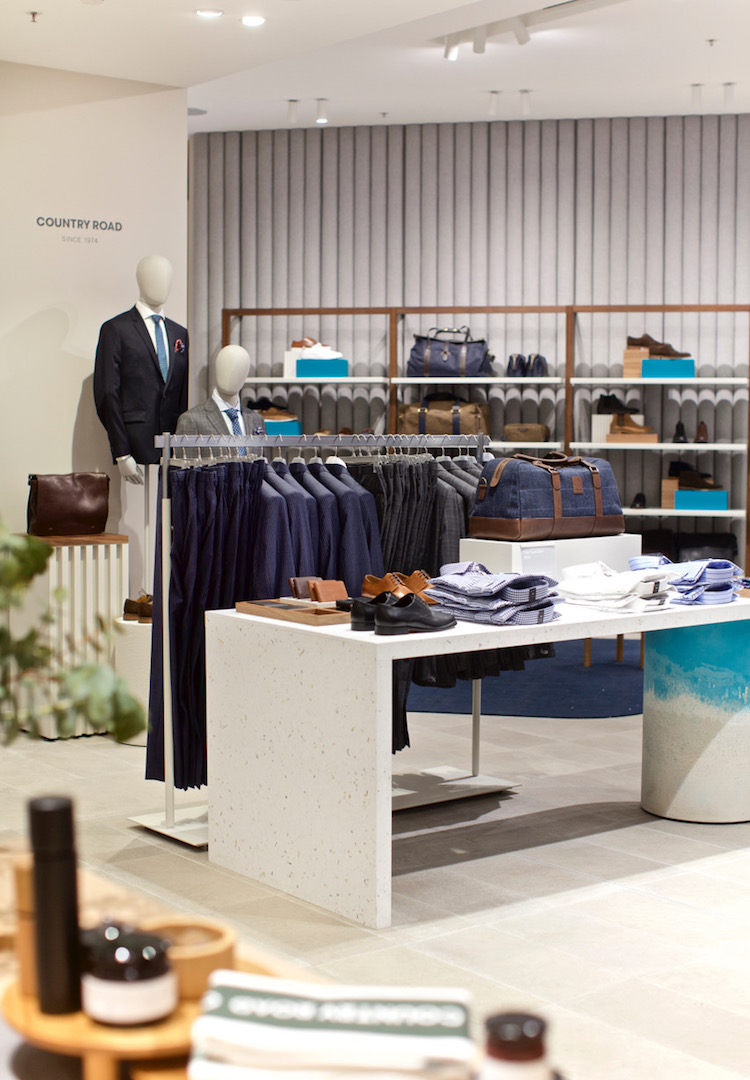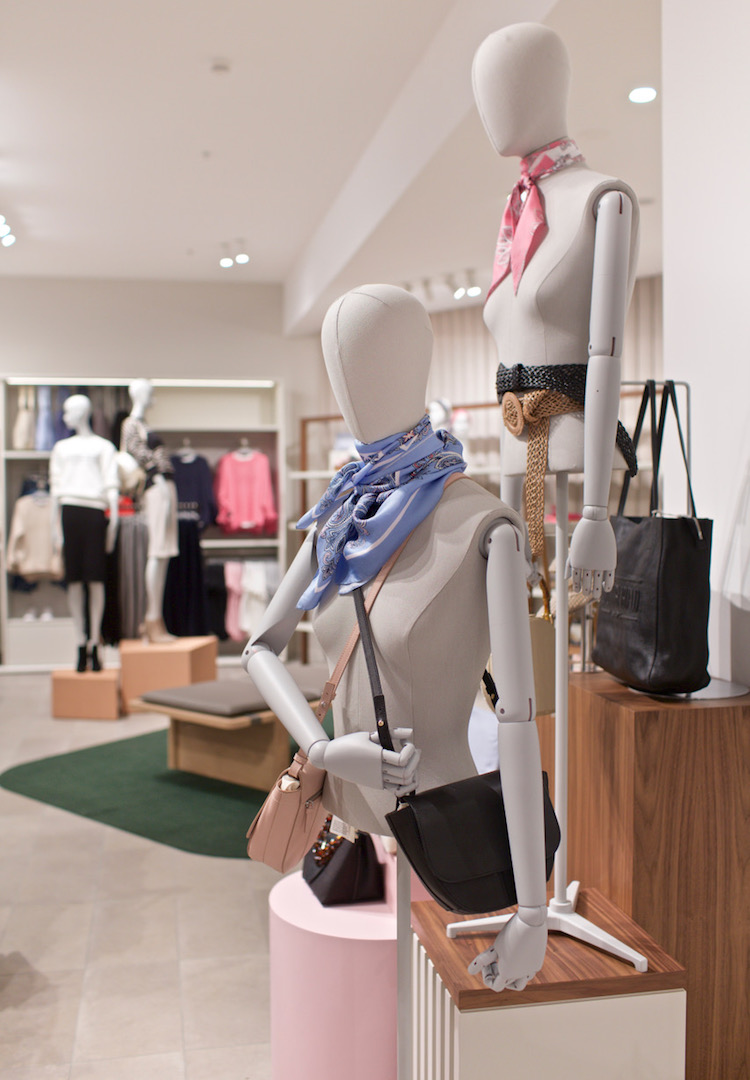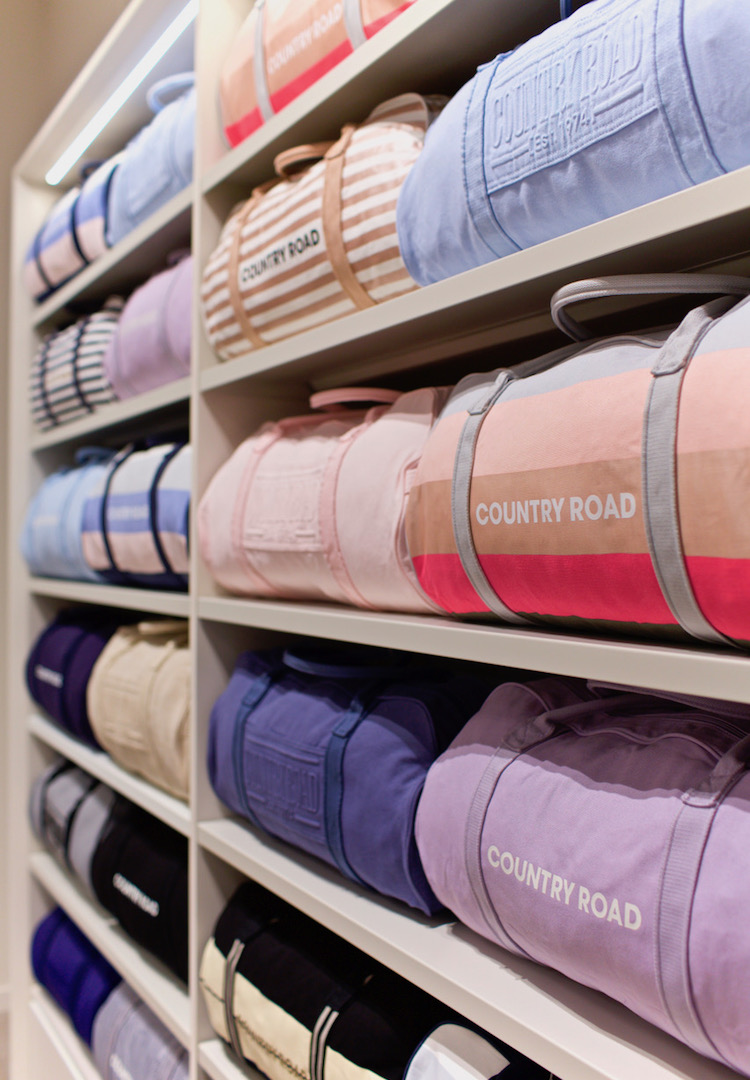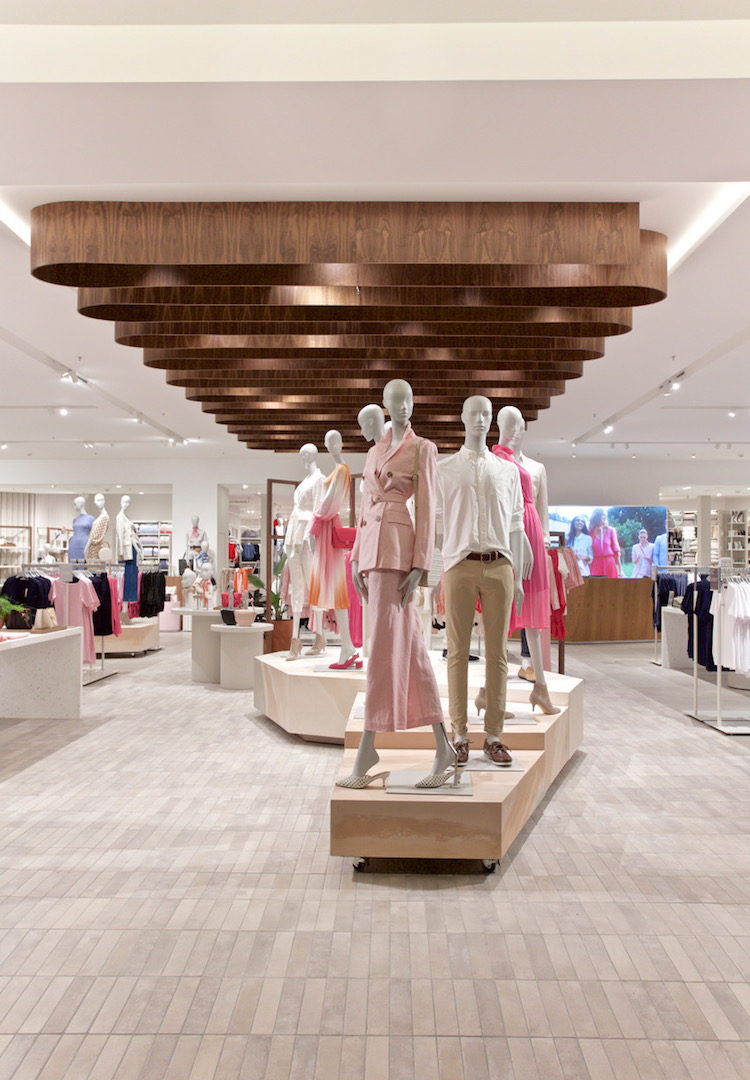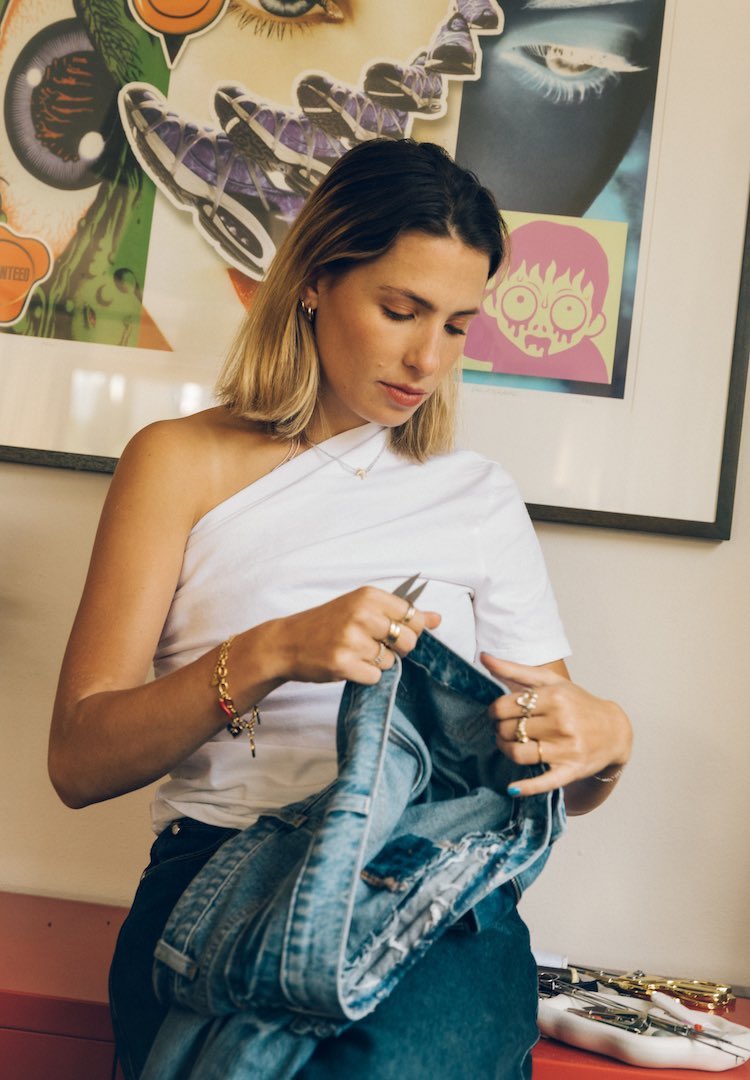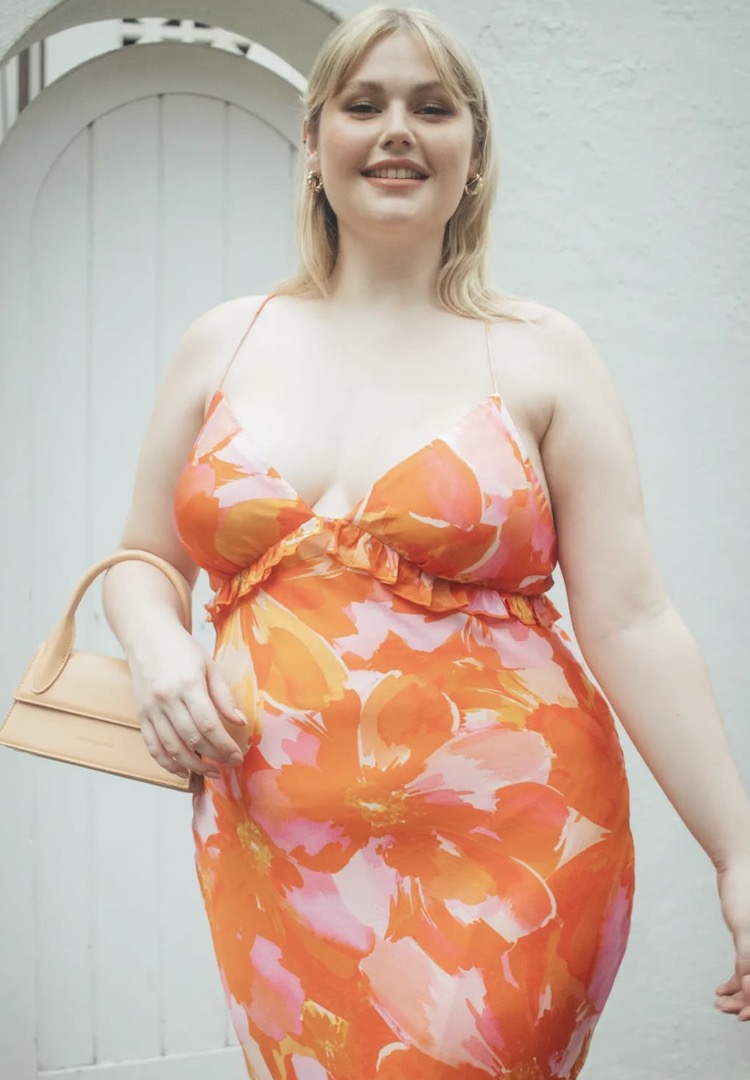A new Country Road store is made from recycled fishing nets and yoghurt containers
Words by Bianca O’Neill.
The future of sustainable retail isn’t just about clothes.
We’ve heard a lot about sustainability in fashion lately. From reducing the impact of water-intensive denim processes to a carbon-neutral fashion week, it seems we are finally on our way towards ensuring the word ‘sustainability’ isn’t simply a bunch of marketing spin.
However, as retail consumers, is it enough that our clothes are increasingly sustainable? How about the retail environments that accommodate them?
One argument for the increasing move toward online retailing is the reduction of these energy-intensive and waste-creating spaces that house our favourite clothing (although, there is a long way to go for a lot of online retailers who use excessive amounts of packaging). So, when attending a panel talk about sustainable retail spaces last week, I was more surprised than anyone to find myself in the cavernous, constantly-lit, air-conditioned space that is Chadstone shopping centre.
We were there to celebrate the opening of a new Country Road concept store. Its Chadstone flagship is the first fashion retail store in Australia to be awarded a 5-star Green Star Design Review rating.
Clare Press, Sustainability Editor at Vogue, hosted a surprisingly open and fascinating panel featuring Joost Bakker (“poster boy for zero waste living”), architect Paul Digby (who designed the new space), Davina Rooney (CEO, Green Building Council of Australia) and the very inspiring 13-year-old climate activist, Bella Burgemeister.
I say surprising because I’ve been to quite a few of these panels – and they usually spend their time paying lip service to the brand, rather than saying anything particularly insightful.
Here, on the other hand, there were discussions about the fact retail has been late to the green game – five star rated offices have been de rigueur for a while now in Australia. There was an acknowledgement that fashion has largely ignored the cradle-to-grave impact of their product – sustainable cotton is one thing, but what about all that packaging?
Joost Bakker pointed out that, as an industry, we need to start with changing the system itself – rather than responding to the system with waste management and recycling solutions. How can we eliminate the waste in the first place, rather than simply treating the problem? Architect Paul Digby countered with the many fascinating design elements of this store, the first of its kind in fashion retail in Australia.
The carpet is made from recycled fishing nets. The tables are created using old yoghurt containers. The walls are clad in recycled paper. Even the hooks in the fitting rooms have been ingeniously devised from ocean plastic waste. Here, we see what Bakker is talking about, in action – instead of creating a plan to recycle these store fittings later, Country Road is starting with reutilising waste products.
It’s proof that a truly unique and beautiful retail experience can result from a sustainable design approach.
As I wandered around the store, sipping my coffee from a reusable cup, I was inspired about the future of retail spaces.
It was just a shame that I took away my new Country Road outfit in individually paper-wrapped packages, inside a paper bag. It made me wonder, fashion has survived a lot of things, but can it survive a bag ban?
-Follow Bianca’s fashion coverage over at @bianca.oneill.

